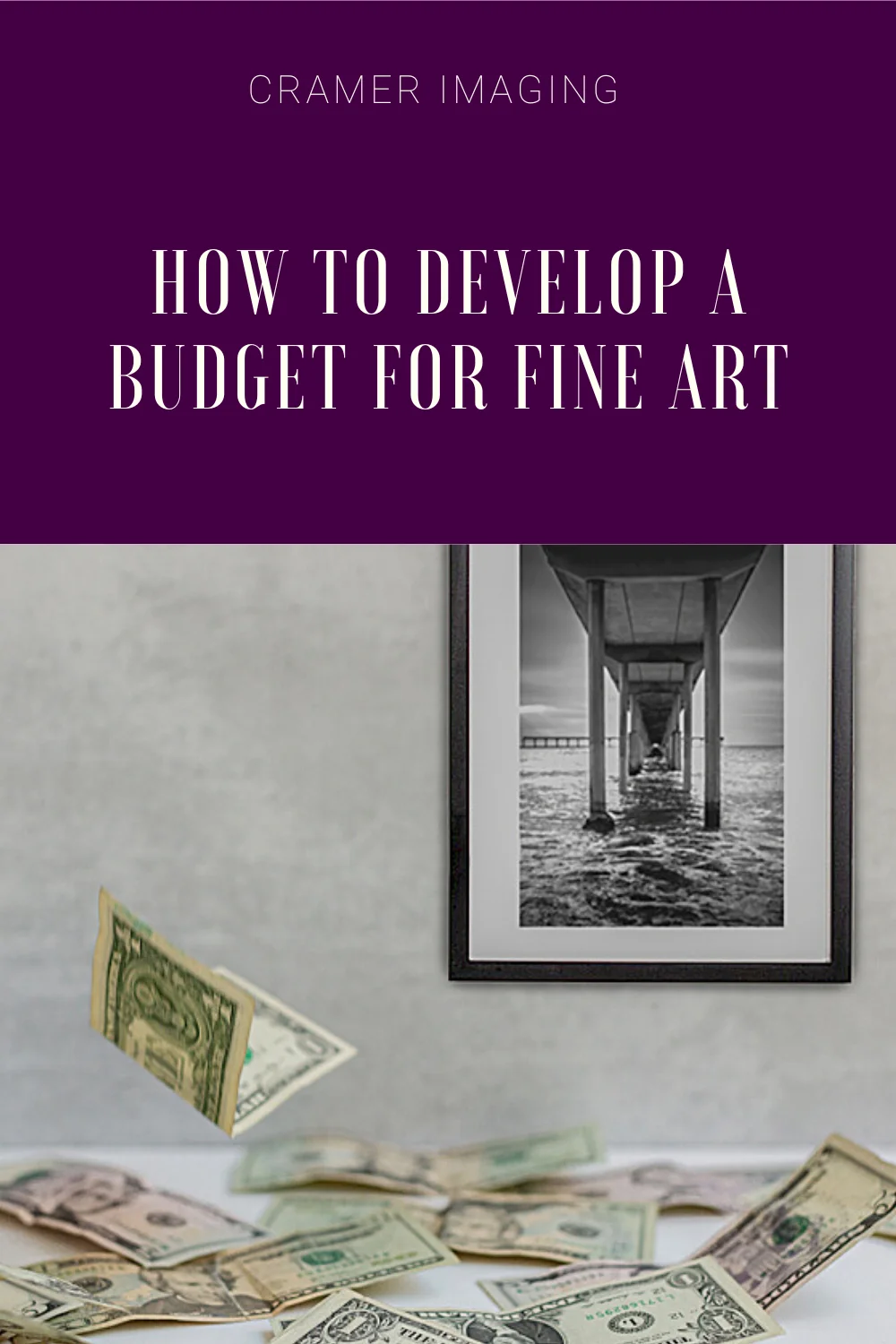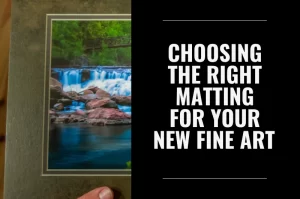How to Develop a Budget for Fine Art
Shop

Let’s face it. Fine art costs money. It costs a lot of money. Some of the best and most famous pieces are well outside the price range of the average consumer such as yourself. This, however, does not mean that you cannot afford some beautiful fine art yourself. In fact, you can afford some amazing fine art if you know what to do. So let’s work on how you develop a budget for fine art.

We know that you don’t have several hundred thousand dollars to just drop into fine art on a whim. Neither do we. However, acquiring fine art is a simple process of setting a realistic goal and going about the necessary steps of accomplishing that goal. In this case, it’s sitting down to develop a budget for fine art and sticking to it.
How To Set a Budget
Developing a budget for fine art is simple. It does require some effort and some math but it can be done easily.
Step One
First, in order to develop a budget for fine art, you must to sit down with all of your financial information. Most financial statements of any kind are broken down monthly so this is a good time measurement to work with.

You will need all of your assets. This includes your income statements like your paycheck stub, your bank interest statements, your investment information, etc. If it gives you money regularly, you need to account for it.
You will also need to accumulate all of your liability information. This is what you spend money on every month. This is not just your mortgage, car payment, and credit card debt. It also includes any and all insurance you pay for (car, home-owner’s, medical, life, etc.), your average grocery bill, your average utility bills, your average money spent on entertainment, etc. If you spend money on it regularly or periodically, you must account for it.
Once you have this information together, it must be compiled. This is where the math comes in. Combine all your assets into a single figure. Combine all of your liabilities into reasonable categories such as those listed above. Also combine them into a single figure. Subtract your liabilities figure from your assets figure. This will give you how much money you have left over at the end of the month. This formula can be used for saving for more than just fine art.
If you find that this number is positive, then you have some money to work with for your fine art budget. If you find that this number is negative, then you need to adjust your personal finances and find some areas to cut spending in or boost your income in before saving for a fine art purchase.
Remember how I said to break your liabilities down into categories? This is where you can find areas to cut. If you find an area that seems extremely high in spending, then this is an area to look at reducing what you spend.
If you spend a large amount of money every month on personal or family entertainment, this is a perfect area to reduce spending. Also, if your insurance is extra high, then you might need to reduce or even eliminate some of your coverage. High mortgage and car payments may require refinancing. If groceries are high, stop spending so much on goodies or start purchasing generic products instead of brand names. Get the idea?

This financial ordering works well for negative monthly net income as well as net income which is positive but perhaps not as high as you would like it to be.
Step Two
Now that you have an idea of what your finances look like and a number for your average excess monthly income, now you can decide on how much you want to set aside for fine art. The amount you choose to set aside can be a large or small as your budget will allow for. It is simply a matter of selecting a number which works for you.

You also need a place to store this money where you won’t be tempted to or accidentally spend it. Savings accounts work well for this as do change jars. There are lots of different methods for saving money out there. Choose a method which you know works for you.
Step Three
This step is perhaps the most difficult step of all for most people. This is the step where you commit to saving your money and actually do so. You took the time to develop a budget for fine art. Now you must work to realize your dream. If you commit so setting aside $25 a month for your fine art budget, do so every month. If you commit to $5 a week, then you must set that much aside every week.
This step requires your self-discipline. You must stick to it no matter how much you want that bowl of icecream or that steak dinner tonight. Most movies will eventually come out for rental and on TV. You don’t need to see it on opening night no matter how much you want to. Keep your eyes on the prize.

There are a few ways of making things easier on yourself. One such way is to set up an automatic funds transfer into your savings account every time you get paid. My in-laws do this for their property tax. They don’t every have to worry about whether or not there will be enough money when the time comes.
 Another way is to set up a picture of what you are going for in a prominent place (such as the bathroom mirror) where you can daily remind yourself of what you are saving your money for. This will only work if you will see the reminder enough during the day. Only you can determine how frequently is “enough” for you.
Another way is to set up a picture of what you are going for in a prominent place (such as the bathroom mirror) where you can daily remind yourself of what you are saving your money for. This will only work if you will see the reminder enough during the day. Only you can determine how frequently is “enough” for you.
You can also use your significant other to be the voice of reason when you feel weak. There are plenty of other ways out there to assist you. Be creative. Whatever you choose, use a method which you know will work for you.
Also, put any and all extra money you get towards this goal. If you get a birthday or Christmas gift check, this is a great place to apply the money. If you get a bonus from work, store it here. This will speed up the time it takes you to reach your goal of buying a piece of fine art.
How Do I Know How Much To Save?
Knowing how much money to put aside for fine art can be a difficult business if you don’t know what you want. You will never know when you have arrived at your goal if you don’t know what your goal is.
The best advice I have for this is for you to do some shopping for the kind of fine art which you wish to purchase and display. This is best done at the start of the process so you know exactly how much money you need for the purchase. Make sure to add in some extra money above the purchase price of the piece for sales tax in the US.

If you are purchasing a piece of wall art, then make sure that you have budget money for matting and/or framing. Not all fine artwork comes pre-matted and framed. You might need to account for this in your budget plans as well.
You should also do some quick check-ups during the process of saving. This is to ensure that the price of the item doesn’t change or that the item you want isn’t sold out before you can save for it. If the price changes, you adjust your financial goal accordingly.

A good average window for checking back on the price is about once a month. This is of course dependent upon where you are purchasing from (this won’t work for Ebay auctions for example) and how many copies of the art piece are available. The more which are available, the less you should be worrying about obtaining your fine art piece. Don’t check every day as it stops being price checking and becomes drooling.
Reaching Your Budget Goal
The final part of budgeting for fine art is when you have reached your goal. This is the fun part. This is when you get to contact the artist or the art dealer and make your purchase. You get the fun of knowing you purchased something expensive and amazing on your budget and you get the fun of setting it up in your home for all to see.

Make sure to enjoy the fruits of your labors and your discipline. You can also go reward yourself with an icecream cone too if you wish. Sometimes, we all need a little more immediate or spontaneous reward too.

Conclusion
Setting up a budget for a fine art purchase is a simple matter. If you have your financials in good order, it will be a trivial matter of allotting the funds. Develop your budget for fine art and get to work. If you can keep to your goal, you will be rewarded with being able to purchase a beautiful piece of fine art which will amaze your friends and family.
Since you are probably looking for a piece of fine art to budget for now, head on over to our store and check out some of the amazing and beautiful fine art photography we have at Cramer Imaging. We have paper prints for many of our photos. Our prices will be easy for your fine art budget to handle. Our photos will not disappoint. Check it out now.
Best Sellers
Cramer Imaging Newsletter

Receive monthly updates in your inbox from us.







